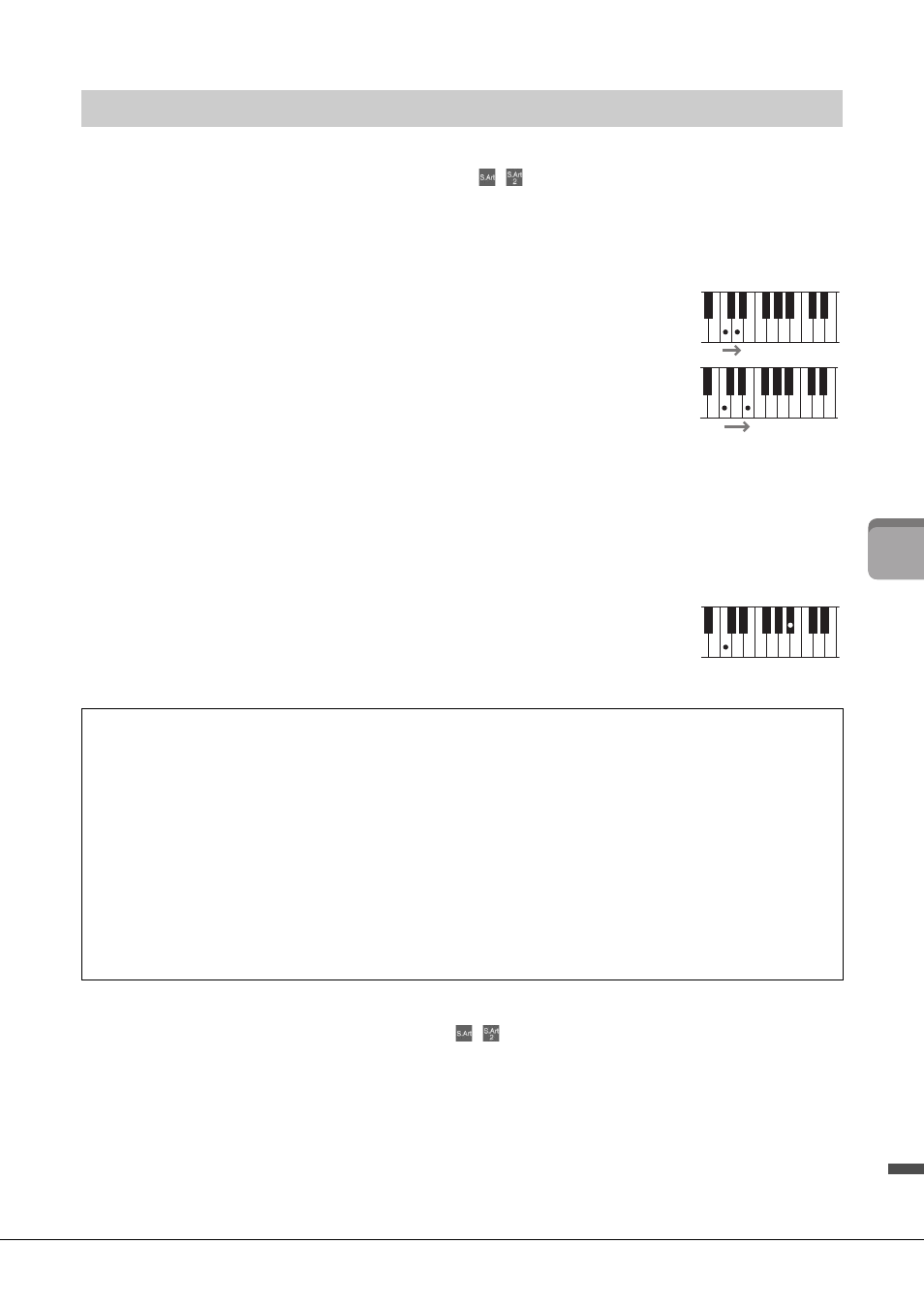Playing super articulation voices, S.art voices, S.art2 voices (cvp-709 only) – Yamaha CVP-705B User Manual
Page 53

CVP-709/CVP-705 Owner’s Manual
53
V
oice
s – Pla
yi
n
g t
h
e
K
eyboa
rd
–
The Super Articulation Voices (S.Art Voices and S.Art2 Voices) enable you to create subtle, very realistic
musical expressions, simply by how you play. The icons
/
are shown on the left side of the voice name
of Super Articulation Voices (S.Art, S.Art2) on the Voice Selection display.
S.Art Voices
The S.Art Voices provide many benefits with great playability and expressive control in real time.
Example: Saxophone Voice
If you play a C note and then an adjacent D in a very legato way, you will hear the
note change seamlessly, as though a saxophone player played it in a single breath.
Example: Guitar Voice
If you play a C note and then the E just above in a very legato but firm way, the pitch
slides up from C to E.
S.Art2 Voices (CVP-709 only)
For wind instrument Voices and Violin Voices, a special technology called AEM has been used, which
features detailed samples of special expressive techniques used on those specific instruments — to bend or
slide into notes, to “join” different notes together, or to add expressive nuances at the end of a note, etc.
NOTE
AEM is a technology that simulates the sound of acoustic instruments naturally by smoothly joining the most appropriate sound samples
selected from the data base in realtime during performance.
Example: Clarinet Voice
If you hold a C note and play the B
R
above, you’ll hear a glissando up to the B
R
.
Some “note off ” effects are also produced automatically when you hold a note for
over a certain time.
For specific performance instructions on certain Voices, you can call up the Information window of the
selected S.Art Voice or S.Art2 Voice by touching the
/
icon which appears on the upper right of the
Voice name on the Home display.
NOTE
• S.Art and S.Art2 Voices are only compatible with other models which have those types of Voices installed. Any Song or Style data
you’ve created on the instrument using these Voices will not sound properly when played back on other instruments.
• S.Art and S.Art2 Voices sound differently depending on the keyboard range, velocity, touch, etc. Hence, if you turn on a Keyboard
Harmony effect, change the transpose setting or change the Voice Settings, unexpected or undesired sounds may result.
• The characteristics of S.Art2 Voices (default vibrato setting and articulation effects applied by the pedals) are effective for real-time
performance; however, these effects may not be completely reproduced when you play back a Song which has been recorded using
S.Art2 Voices.
Playing Super Articulation Voices
Adding Articulation Effects by Using the Pedal
When you assign an S.Art or S.Art2 Voice to the Main part, the function of the center or/and left pedals are
switched to control articulation effects. Pressing a pedal triggers different playing effects, separate from your
keyboard playing. For example, pressing a pedal for a saxophone Voice can produce breath noises or key noises,
while doing the same for a guitar Voice can produce fret noises or body-tapping sounds. You can effectively
intersperse these into the notes as you play.
When an S.Art2 Voice is selected, pressing a pedal and playing/releasing a note enables you to add articulation
effects, such as bend up/down, glissando up/down, brass falls, etc.
NOTE
• If you want to lock the pedal function regardless of the Voice, turn off the Switch With Main Voice parameter called up via [Menu]
[Assignable] [Pedal] [Switch With Main Voice].
• If you assign the Articulation function to the ASSIGNABLE buttons (page 32), you can control articulation effects by using the
buttons instead of the pedals.
